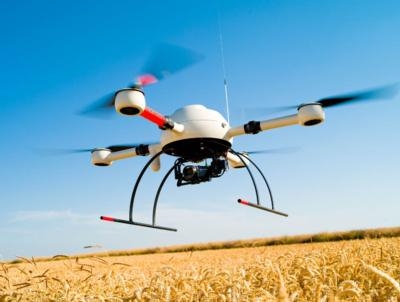As The Giftgiving Season Approaches, Millions of Small Drones Will Head Out Of The Stores
Dropping prices and increased sophistication are going to make small drones popular gifts. They are fun, exciting, and provide a great recreational activity and continuing hobby enjoyment. However, they come with legal attachments as they relate to federal regulations. This is a quick and simplified overview of what you get involved in when operating a small drone.

Definition
It gets a little confusing because so many names are used to define the small unmanned aerial vehicles. All the new federal drone regulations only relate to radio-controlled aircraft that weigh less than 55 pounds. You may hear these small aircraft referred to as unmanned aerial vehicles ((UAV), unmanned aerial systems (UAS), small unmanned aerial systems (sUAS), unmanned aircraft (UA), drones, and model aircraft.
The bottom line is, if it’s radio controlled and weighs less than 55 pounds, all of these terms can be applied to the same vehicle. The FAA seems to be using the abbreviation, “sUAS” pretty consistently, so that’s what we’ll stick with for this discussion.
Registration
Any sUAS that weighs more than about 1/2 pound (25kg) must be registered with the FAA. A registration number must be displayed on the sUAS and the minimum age for registration is 13 years old. There’s more to it than this, and information can be found by starting on the FAA website. There are penalties for not complying with this regulation.

Hobby and recreational sUAS use
The new FAR 101, subpart C, was created in June of this year and applies to hobby and recreational operators. It’s very important to review this regulation which is also explained in greater detail in the FAA advisory circular, AC 91.57A. The regulations and advisory circular simply provide the definition of model aircraft recreational operation, and a hobbyist needs to know this.
Non-hobby and non-recreational sUAS use
This new FAR 107 regulation goes into considerable detail regarding operating a sUAS outside of the definition for ‘hobby and recreational’ use that is found in FAR 101. Operating under FAR 107 requires specialized training, testing, and obtaining a remote pilot license. FAR 107 is complex and is commonly referred to as the rules for sUAS commercial operation, but it is not actually titled with the word “commercial.”
Operating a sUAS outside of the FAR 101 definition of hobby and recreational use is serious business, and noncompliance with FAR 107 can lead to costly consequences. The FAA also has the capability of issuing certain specialized waivers for non-hobby and non-recreational sUAS use.
Local rules
Some states and local municipalities have implemented rules regarding sUAS operation. Some of these regulations relate to privacy issues and others may even involve separate fees. There is no widely published listing of these local rules, so it’s best if you check with your local authorities.
Summary
A lot is already being written about these new regulations, and training schools are being established for FAR107 certification which could leave the impression that hobby and recreational ownership of a sUAS is complicated. To be honest, recreational use is not that big of a deal; you just need to know what you’re getting into, and operate within the FAR 101(C) guidelines and any other operating rules imposed by local authorities.
(Image from file)
 ANN's Daily Aero-Term (05.01.24): Say Altitude
ANN's Daily Aero-Term (05.01.24): Say Altitude ANN's Daily Aero-Linx (05.01.24)
ANN's Daily Aero-Linx (05.01.24) Classic Aero-TV: Korean War Hero Twice Reborn
Classic Aero-TV: Korean War Hero Twice Reborn Airborne 04.29.24: EAA B-25 Rides, Textron 2024, G700 Deliveries
Airborne 04.29.24: EAA B-25 Rides, Textron 2024, G700 Deliveries Airborne Affordable Flyers 05.02.24: Bobby Bailey, SPRG Report Cards, Skydive!
Airborne Affordable Flyers 05.02.24: Bobby Bailey, SPRG Report Cards, Skydive!




